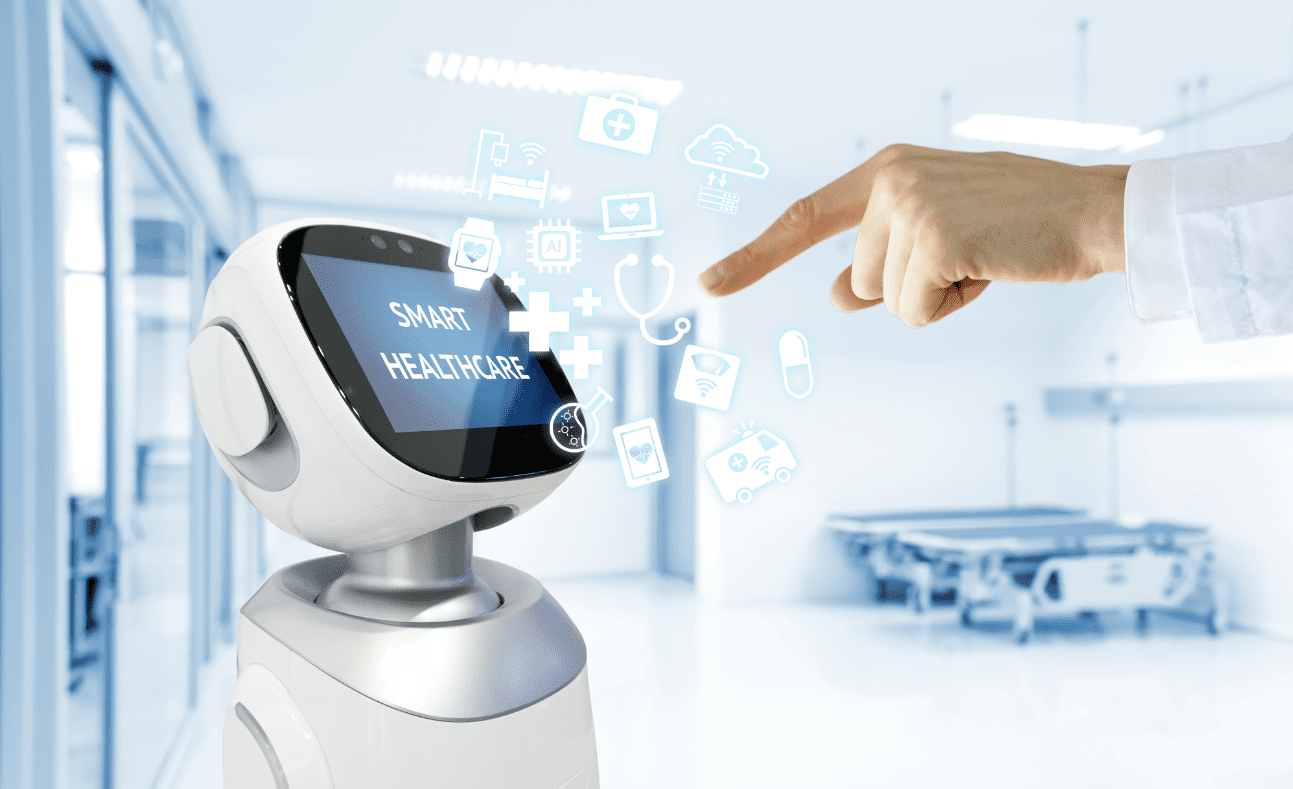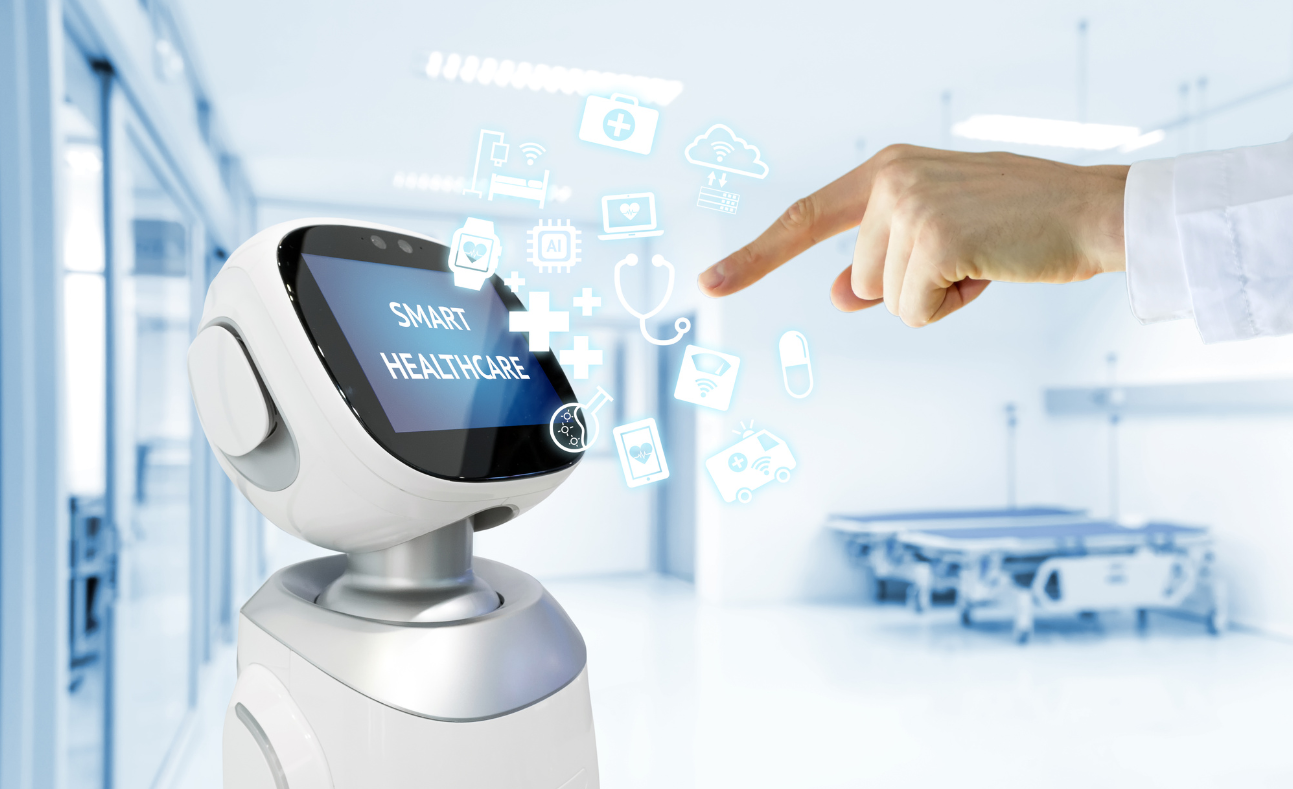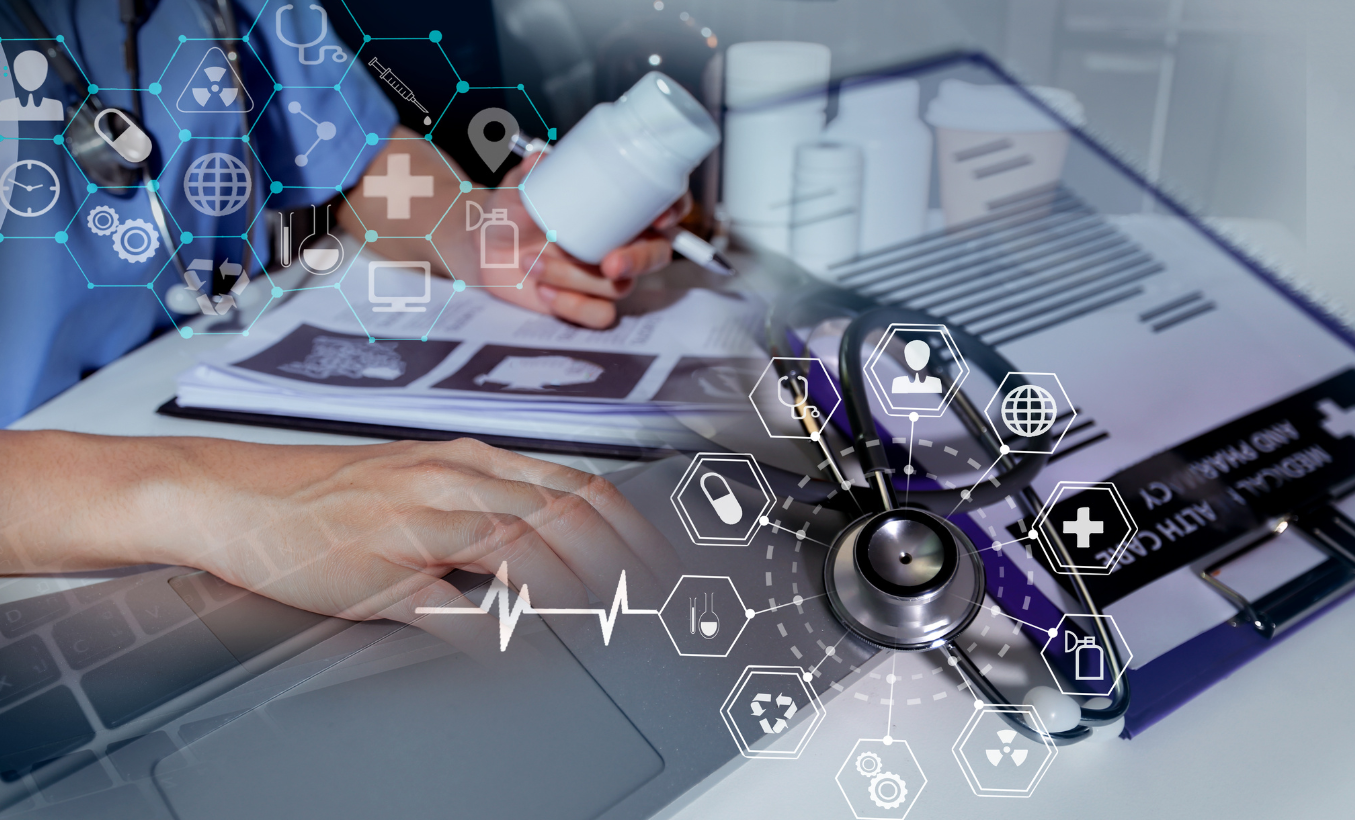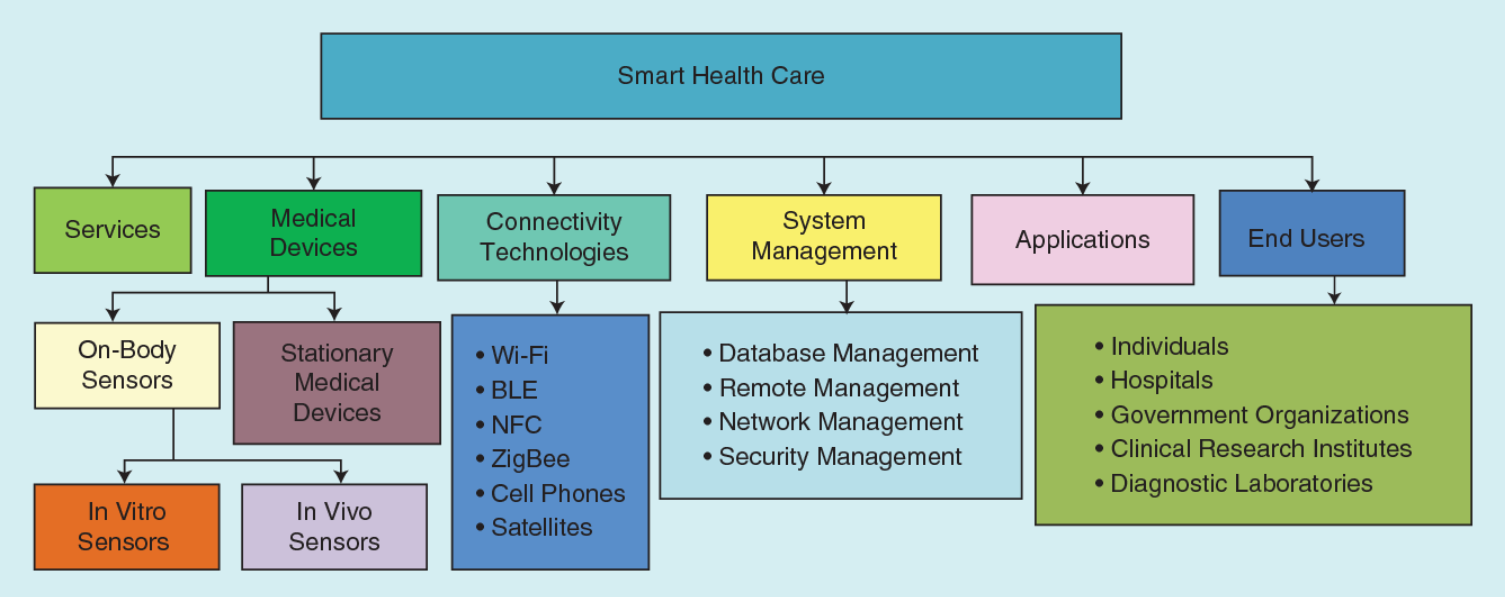Fundamentals of Smart Healthcare System Using IoT

With increasing healthcare needs across the globe, the message is clear: we need agile, responsive, and intelligent systems. Stepping up to this challenge is the Smart Healthcare System using IoT, bringing forth solutions that are not only innovative but also vital in elevating the quality of care.
Healthcare professionals, administrators, and visionaries are at the frontlines, observing firsthand how this seamless integration revolutionizes patient outcomes and facility operations. It’s not just about adding technological innovation; it’s about pioneering a new-age healthcare model. From patient wearables that offer continuous health monitoring to intricate hospital management systems that operate in real-time, the integration of IoT is reimagining the very core of healthcare delivery.
Yet, as with all evolutions, understanding the nuances is key. Beyond the buzz, what makes a healthcare system “smart” through IoT? What are its core components and its groundbreaking applications? Let’s delve into the “how” and “why” of healthcare software development through IoT.
Smart Healthcare Systems Using IoT: Brief Overview
Take a moment to visualize IoT smart healthcare. This is a vast interconnected network of devices, each diligently serving its role in the expansive realm of healthcare. These aren’t just any devices; they range from portable wearables on a patient’s wrist to sophisticated medical IoT equipment in clinics and hospitals. And they all share a common mission: collecting invaluable health data to enhance care delivery.
But labeling them “smart” isn’t a mere nod to modern tech. It embodies their actual capability. These devices aren’t passive. They’re continuously communicating, collaborating, and often making instantaneous decisions based on the data they assimilate. Their proactive nature doesn’t just document health metrics; it actively contributes to the overall health narrative. Through the synergy of IoT in smart healthcare, devices are evolving from mere data repositories to active participants in our healthcare journey.

Applications of Smart Healthcare IoT
Healthcare, a sector that once depended heavily on manual methods and traditional equipment, has seen a paradigm shift with the introduction of smart technology. The landscape now flourishes with integrated healthcare systems that couple the human touch with the intelligence of AI, the omnipresence of cloud connectivity, and the immediacy of real-time analytics. Let’s dive deeper to understand how applications of IoT in healthcare are reshaping patient care and clinical experiences:
- Implantable Glucose Monitors: No longer do diabetes patients solely depend on periodic checks. Current devices, working around the clock, keep tabs on glucose, providing both real-time alerts and invaluable long-term patterns.
- Cancer Treatment and Activity Trackers: Understanding a patient’s vitality and routine is crucial in cancer care. Trackers today give insights, from simple movement metrics to intricate details like fatigue, ensuring treatments are tailored, not templated.
- Heart Monitors in Real-Time: With wearable devices, cardiac patients and their physicians have access to continuous heart data, aiding in proactive interventions and immediate alerts during emergencies.
- Redefining Medical Alerts: Beyond simple alarms, modern IoT devices for healthcare now ensure that help can be called in case of emergencies such as an unexpected fall.
- Ingestible Medication Sensors: It’s a simple solution to a widespread issue. These sensors remind patients of their medication schedule, ensuring consistent intake and also aiding in the early diagnosis of certain gastrointestinal conditions.
- Precision in Medication: In addition to manual dosing, implantable dispensers provide consistent medication dosing, alerting both patients and their physicians about refill times or missed doses.
- Guarding Biomedical Integrity: In labs and storage rooms, IoT steps in to ensure that critical materials like blood samples remain in perfect condition through temperature-regulating wireless sensors.
- Asthma Management with Smart Inhalers: Inhalers have evolved. They now provide data-driven feedback, not just medicine. They also offer reminders, ensuring regular usage and aid in identifying and managing asthma triggers.
- Mental Health and Wearables: Addressing mental well-being, devices now provide continuous mood and cognitive monitoring, helping both patients and their support systems.
- Connected Lenses with Dual Purposes: Beyond vision correction, these lenses are now evolving into health monitors, tracking metrics like glucose and even aiming to resolve focus-related issues in the near future.
- Swift Location Services in Hospitals: With countless devices and equipment, healthcare facilities can ensure prompt location and usage through IoT-enabled tracking systems.
- Elevating Outpatient Care: With devices that offer smart healthcare monitoring systems using IoT, outpatient care is becoming more responsive, allowing for timely medical intervention when needed. More about remote patient monitoring benefits you can read in our blog.
The transformative power of IoT in the realm of healthcare is palpable. The applications listed are just glimpses into a future where patient care is more precise, proactive, and personal. As this evolution continues, one can only anticipate the countless breakthroughs that will further elevate the healthcare experience for all.
Smart Hospitals: IoT in Action
The Internet of Things (IoT) is rapidly transforming outdated 20th-century hospitals into interconnected, data-driven facilities. By seamlessly integrating networked sensors, devices, and analytics software, healthcare providers can deliver better patient care, optimize complex operations, and even lower costs. Below are some of the key ways IoT is revolutionizing hospitals and improving health outcomes.
The Advanced Frontier of Continuous Monitoring
Beyond basic wearables, IoT-powered devices are engineered for sophisticated health surveillance. These aren’t mere gadgets; they’re finely-tuned instruments. For instance, portable ECG/EKG sensors today capture cardiac nuances that can signal impending events, even before they become clinically apparent. This means physicians don’t just receive data; they get preemptive notifications on patient health shifts that might otherwise have been overlooked.
Precision Asset Management
In a sprawling healthcare setting, equipment misplacement can lead to inefficiencies. But modern hospitals are evolving. RFID and BLE technology, infused with IoT, bring an unprecedented level of precision. It’s more than just locating a device; it’s about understanding equipment usage patterns, optimizing device deployment based on real-time needs, and predicting when maintenance is due before a machine even shows signs of wear.
Surgical Procedures with Precision
The operating room is an intricate dance of tools, medical professionals, and patients. IoT location tracking brings methods to this madness. With real-time tools and personnel tracking, there’s a drastic reduction in preventable errors. BLE beacons can even highlight sterilization processes, ensuring no tool is compromised and thereby significantly reducing the risk parameters during surgeries.
Beyond Predictive: Proactive Hospital
IoT-driven analytics don’t just predict; they proactively suggest adjustments. This is about foreseeing hospital operational needs based on multi-faceted data inputs from IoT devices. For instance, resource allocation isn’t based merely on patient inflow predictions but also on nuanced metrics like seasonal health trends, historical patient behavior, post-surgical procedures, and more.
Dynamic Hospital Environments
It’s not about adjusting the thermostat anymore. IoT in healthcare brings dynamic environment control. For instance, specific recovery rooms can have environments auto-adjusted based on the specific surgery undergone, understanding that a post-cardiac surgery patient might have different environmental needs compared to an orthopedic patient.
In short, integrating IoT into modern healthcare offers a granular approach to patient care, operational efficiency, and environmental control, setting the gold standard for what modern healthcare should strive for.

Key Components of Smart Healthcare Systems Using IoT
Smart healthcare systems aren’t simply about devices; they represent state-of-the-art hardware, intuitive connectivity, and astute data analysis. This union translates to more than technological progression; it signifies a tangible leap in patient care and medical practices. As technology weaves deeper into our healthcare fabric, it’s this convergence of healthcare and smart IoT that promises a future where diagnosis is precise, care is personalized, and healing is expedited.
| Component | Sub-components/Features | Function/Benefit |
| Hardware and Sensing Devices | IoT sensors and Wearables: Heart rate monitors, Glucose monitors, Sleep trackers, Fitness bandsIoT-enabled Medical Equipment: Smart inhalers, Connected insulin pumps, Robotic surgery tools, Patient monitoring systems | Real-time remote monitoring of patients’ vitals and health metricsInsights into daily health habits Advanced equipment optimizes medical procedures |
| Connectivity and Data Communication | Wireless Protocols: 5G, Wi-Fi, Bluetooth, NFC Cloud-BasedData Storage and Analysis: Encrypted storage, Advanced analytical tools, Data retrieval and updatesIntegration with other platforms | Instant communication between devices Vast storage with security Remote access to patient data |
| Data Analytics and Artificial Intelligence | Predictive Analytics for Disease Prevention: Data models for disease prediction, Patient-specific health risk assessments, Machine Learning for medical Insights, Algorithms for diagnostic assistance, Pattern recognition in medical images, Treatment recommendation systems | Foresee potential outbreaks or patient health risks Diagnostic support and anomaly detection Evidence-based medical decisions |
Smart Hospital Design with IoT in Healthcare
Integrating IoT within hospital infrastructures is the next logical step in the evolution of modern medicine. But how do IoT software developers make this integration seamless?
Mapping Out the Blueprint for Smart Hospital Design
The very first step involves defining the audience. Are we designing this exclusively for physicians and patients? Or does the audience umbrella expand to encompass hospital administrators, managerial staff, and perhaps even insurance agencies? After defining the stakeholders, the focus shifts to data. Decisions must revolve around:
- Types of data to be collected and its subsequent dissemination.
- Methodologies for analyzing this data.
- Effective strategies for presenting the insights to the respective users.
Understanding these determinants provides clarity, ensuring that the design meets the desired objectives of smart healthcare in IoT.
Building the Design: Layers of a Smart Hospital
With a clear understanding of the stakeholders and data flow, it’s time to dive into the actual infrastructure. When discussing smart hospitals, we typically refer to a five-tier architecture, which we’ve detailed in our article. The design is typically multi-layered, each playing a distinctive role.
Sensing Layer
Often referred to as the backbone of a smart hospital, this layer is tasked with one critical function: data collection. Its key components include:
- Wearable Sensors: From monitoring pulse to tracking oxygen levels, wearable ambulatory monitors are indispensable for continuous patient monitoring.
- Ambient Sensors: Ensuring the hospital environment remains conducive to healing, be it maintaining optimal temperature or ensuring proper air quality.
- Location Sensors: Gone are the days of misplacing critical equipment. With RFID tags and other tracking systems, everything and everyone is always accounted for.
- Implantable Sensors: The future is here! Devices, once considered science fiction, are now a reality. Think of insulin pumps that auto-adjust based on real-time blood sugar levels.
Given the paramount significance of the sensing layer, its design, operation, and maintenance require meticulous attention. This includes choosing appropriate data collection intervals, ensuring device longevity, and, most crucially, guaranteeing the absolute privacy of patient data.
Networking Layer
The networking layer is fundamental in a smart hospital. Its primary role is to ensure data moves flawlessly throughout the system. What’s vital when building this layer?
- Communication Dynamics: Do devices talk to each other or transmit information to us humans? Recognizing the nuances between human-to-human, human-to-machine, and machine-to-machine communications sets the stage.
- Network Protocols: This isn’t about merely picking a protocol. It’s about selecting one that’s both secure and efficient. The goal is to ensure data moves smoothly without compromising on security or speed.
- Connection Technologies: In a world filled with diverse tech devices, ensuring all these devices “speak the same language” and work harmoniously is challenging but crucial.
Despite these considerations, challenges abound. We’re talking about creating a platform that works universally, defending against security risks, managing a vast array of connected devices, and, above all, ensuring the confidentiality and safety of personal data.
Remote Servers
They manage numerous devices in a distributed manner. When designing this layer, there’s a focus on a few key components:
- Choosing Computing Technologies: Whether it’s edge, fog, or cloud computing, the decision revolves around where data gets stored and processed.
- Streamlining Device Nodes: Pinpointing the main nodes and base stations is all about efficiency. This aids in conserving energy and streamlining connections.
- Prioritizing Data Integrity: Above all, data needs to be accurate and dependable. It’s not just about collecting data but ensuring its reliability from trustworthy sources.
In the intricate world of healthcare, every detail counts. Getting this layer right is more than a tech endeavor—it’s about safeguarding health.
Knowledge Layer
The knowledge layer is where the rubber meets the road in healthcare systems. Harnessing technologies like AI and robotics, it fine-tunes diagnostics and risk assessments. When building this layer, IoMT developers should focus on:
- Choosing the Right Tech: The system’s demands dictate whether Machine Learning, AI, or specific IoMT setups are utilized.
- Deciding the Processing Mode: The approach might be purely data-driven, steeped in established knowledge, or a blend.
- Unified Data Management: With varied healthcare data streaming in, it’s essential to unify it for clarity and ease of access.
In essence, the knowledge layer is pivotal. It ensures smart healthcare decisions stem from processed and dependable data.
Applications Layer
At the heart of a smart hospital system is the applications layer. It’s where the complexities of data and technology become tangible tools that real people can use. Here’s what you should know:
- Role-Based Application Design: Applications are tailored to user roles. For example, while doctors get an in-depth view of health data, certain insurance specifics might be off-limits.
- Unified Service Platform: It’s the nexus that binds all applications together. Everyone, from the doctor to the patient and even administrative staff, interacts through this platform.
- Tech Integration: It’s about leveraging the right digital solutions. This includes m-health tools for mobile access, e-health databases for patient records, and telemedicine for remote consultations.
For IoT technicians, the smart healthcare challenge is designing interfaces that not just look good but work efficiently. They translate complex data into usable insights with features like graphs or reports. Moreover, with patient data at stake, a robust security protocol isn’t just necessary; it’s non-negotiable. When done right, the applications layer becomes the bridge connecting high-tech capabilities with hands-on healthcare delivery.

Source: Semanticscholar
Smart Healthcare System Using IoT: Summary
When we talk about smart healthcare using IoT, we’re discussing more than just new gadgets and software. It’s a transformative shift in how patient care is delivered and how operations are streamlined. If you’re a healthcare provider looking to embrace this change, know this: it’s not just about the tech. It’s about seamlessly integrating these advancements with patient needs and the rigorous standards of the healthcare industry. This kind of transition isn’t a task for a mere technician; it requires a comprehensive perspective that grasps the full depth of modern healthcare systems.
At Relevant Software, we get it. We’ve dedicated years to this field, tackling the unique challenges of implementing healthcare smart IoT. We don’t just offer tech solutions. We provide results-driven approaches that make a genuine difference. Let’s talk and see how we can help your digitalization journey.



